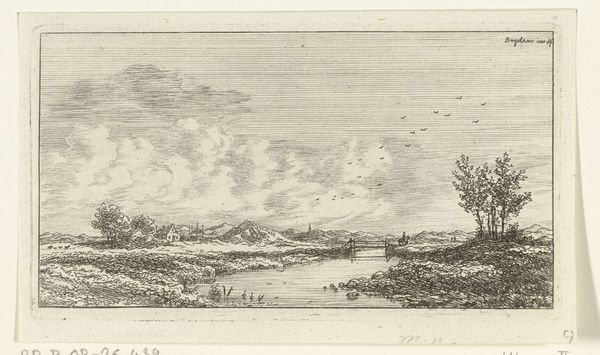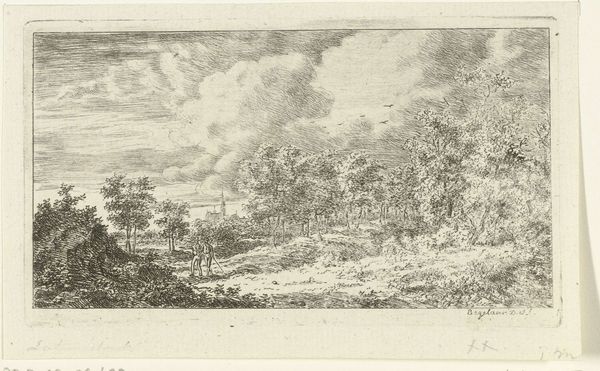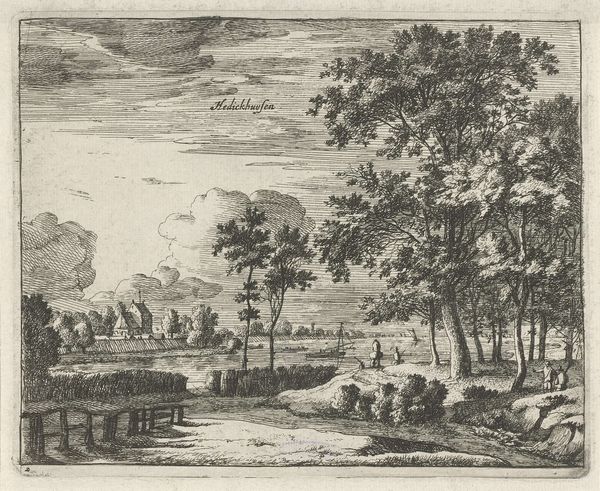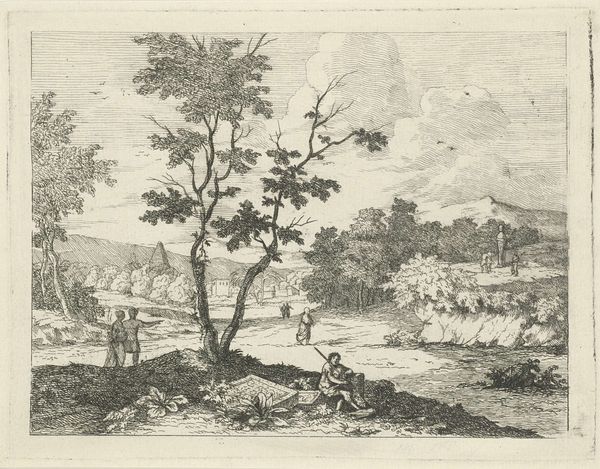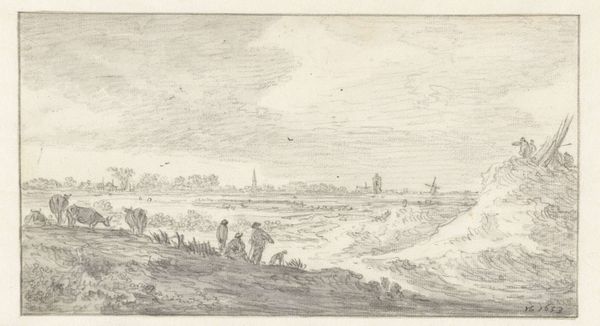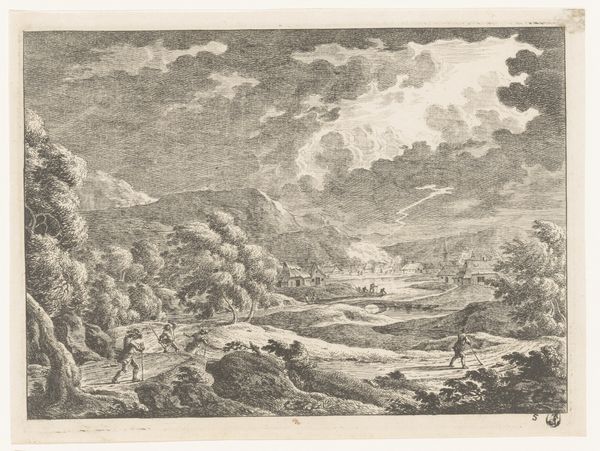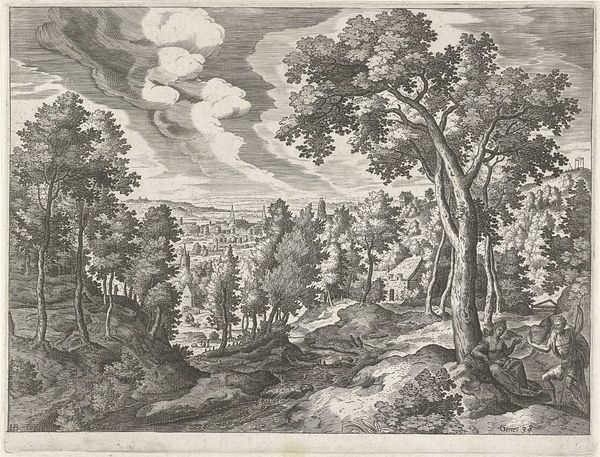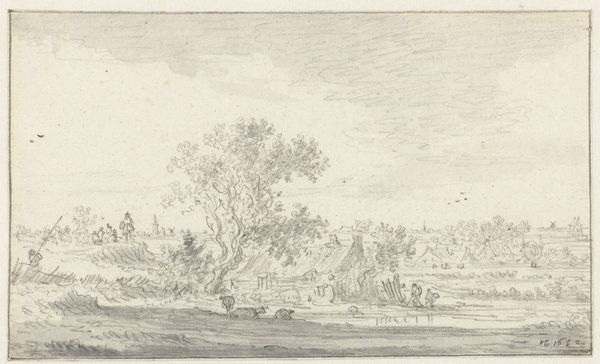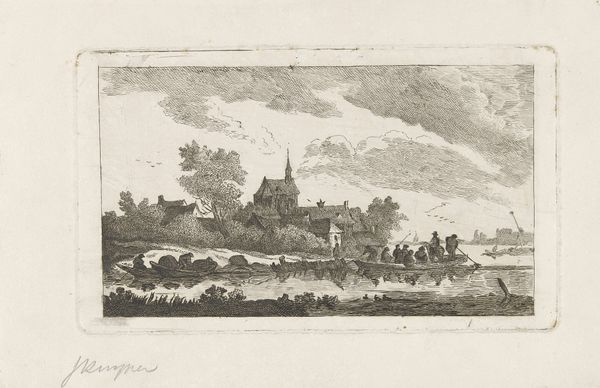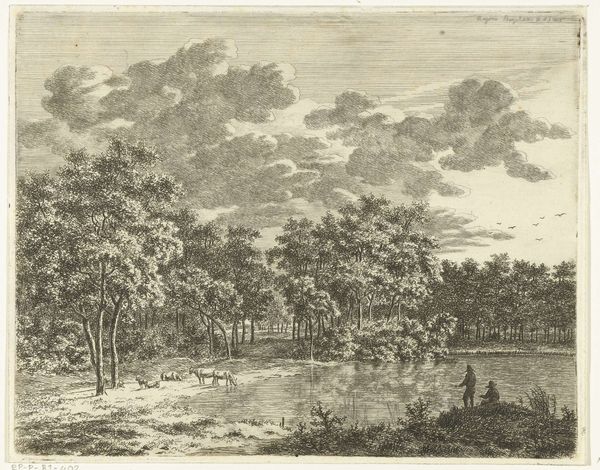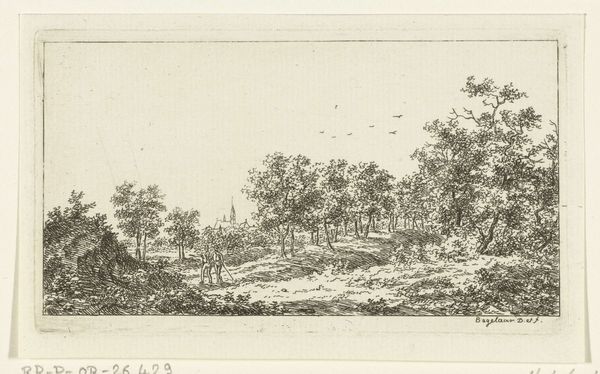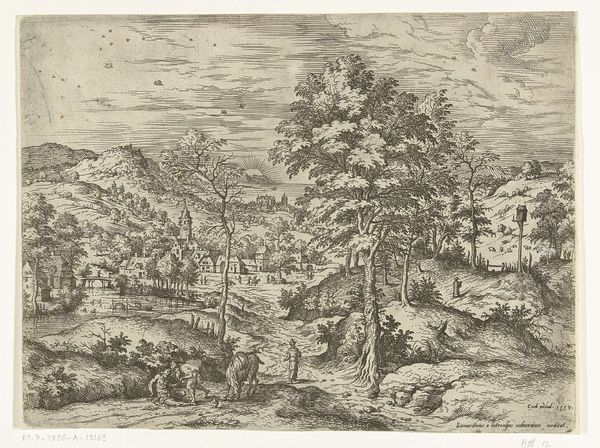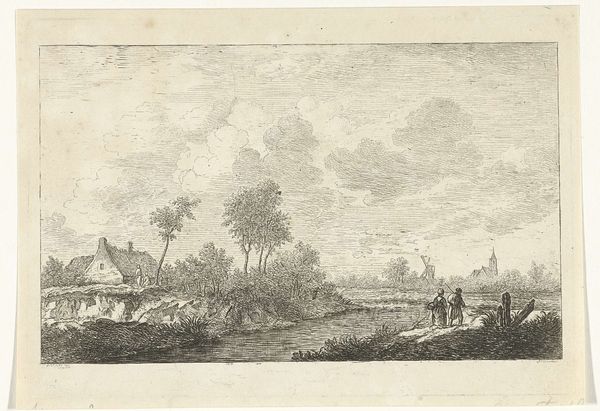
drawing, print, etching, engraving
#
drawing
# print
#
etching
#
landscape
#
romanticism
#
engraving
Dimensions: height 75 mm, width 132 mm
Copyright: Rijks Museum: Open Domain
Editor: This is Ernst Willem Jan Bagelaar’s “Landscape with Boy and Three Goats,” an etching and engraving, likely made sometime between 1798 and 1837. It’s quite a detailed little scene, with a very prominent sky. What first catches your eye in this landscape? Curator: The sky, definitely. Look how the clouds are rendered, almost like voluminous figures. They dominate the composition. But beyond the immediate aesthetic impact, consider how the sky often functions symbolically. Think about how frequently the heavens have stood for fate, divine presence, or even just the uncontrollable forces of nature. What does this choice imply about the relationship between humanity and the world depicted? Editor: That’s interesting…it makes the little boy and the goats seem quite small and insignificant in comparison. So, you’re saying the landscape is more than just a pretty scene; it's commenting on our place in the universe? Curator: Precisely. And beyond the overt symbolism, consider the emotional register. This piece resonates with Romanticism; the emphasis on the sublime, on nature's power to inspire awe and even fear, speaks to the broader cultural trends of that era. What feeling do you get when viewing it? Editor: A bit melancholic, maybe? The vast sky and distant mountains do create a sense of being small in a large world. I didn't think about Romanticism until you mentioned it, but now I see the connection! Curator: Visual symbols become much more enriching with a bit of context. Next time you come across clouds in a painting, how will you look at them? Editor: Definitely with a lot more curiosity about their significance! Thanks for illuminating that for me.
Comments
No comments
Be the first to comment and join the conversation on the ultimate creative platform.
